Authored by Sokolov NS*,
Abstract
Construction of facilities in cramped conditions is always a complex geotechnical problem associated with ensuring the basal emergency operation of buildings and structures of the surrounding buildings. In the arsenal of geotechnicians, a great potential of geotechnical technologies for the installation of pit fences has been accumulated. Often, not everyone is suitable for the conditions of their use in cramped conditions. The most suitable technologies for such cases are the drilled wells used (wells for drill piles and soil anchors) with their subsequent filling with concrete and at the same time not disturbing the stress-strain state of the surrounding soil. The use of drilling piles and soil anchors arranged using electric discharge technology (ERT technology) in many cases successfully solves the problem of construction in cramped conditions. The article cites one of the geotechnical cases of fencing the pit in particularly cramped conditions. The work is an overview.
Keywords: Geotechnical construction; Electric discharge technology of ERT; Drill injection pile ERT; Soil anchors ERT
Introduction
The construction of buildings and structures in cramped conditions requires from builders and geotechnicians close attention [1-12] related to the need to preserve the objects of the surrounding buildings. In this article, a successful example of fencing the pit of a building under construction, located surrounded by existing structures, is given.
Administratively, the construction site of a six-storey residential building is located in Nizhny Novgorod in cramped conditions of urban development. It was built on a non-developmental territory. Surrounded by a house under construction in the zone of geotechnical influence, there are six objects of existing development (see Figure 1), including two objects of the OKN (objects of cultural heritage).
Geomorphologically, the survey site is located on the watershed plateau of the Oka and Volga rivers. Elevations of the surface of the earth within the site vary from 135.9 to 136.3 B.S. (at the mouths of engineering and geological workings). The terrain is planned. The engineering and geological structure of the site to a depth of 20.0 m is represented by undissected upper-middle quaternary loess loams (prQII-III), opened with a capacity of 1.7-2.5 m, undissected upper-middle quaternary loam loams (prQII-III), with a capacity of 14.5-16.6 m, from the surface of the sediments covered with bulk soil (tQIV), with a capacity of 1.7-3.0 m.
All engineering and geological workings are plotted on the layout plan of engineering and geological workings. The geological and lithological structure of the site is characterized by columns of wells and engineering-geological sections. The hydrogeological conditions of the site to a depth of 20.0 m at the time of the survey (July-August 2017) are characterized by the presence of an aquifer confined to Quaternary sediments. The groundwater level was recorded at depths of 4.5-6.4 m. The aquifer is non-pressure, the water-containing soils are loess loam. Water wells have not been opened. The aquifer is fed by atmospheric infiltration precipitation and leaks from water-carrying communication.
The geological and lithological structure of the site is presented in Table 1 (Table 1) (Figures 1-6).

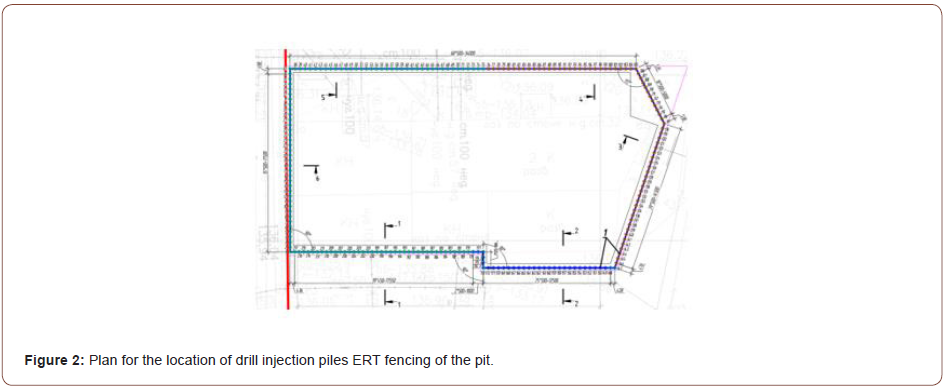
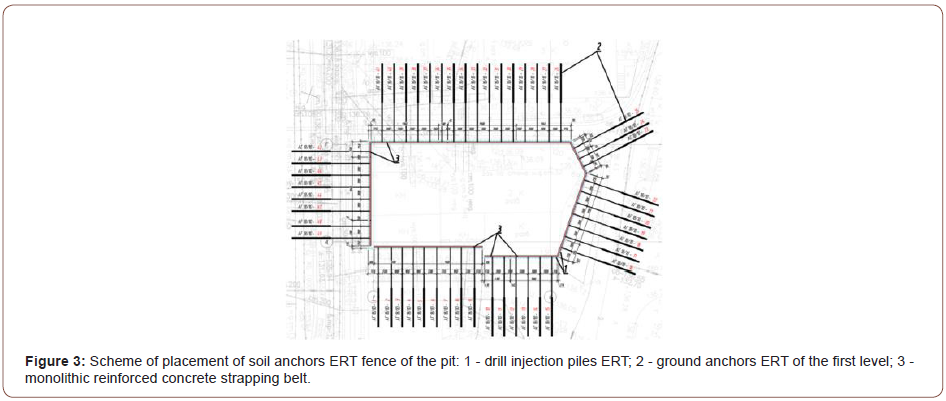
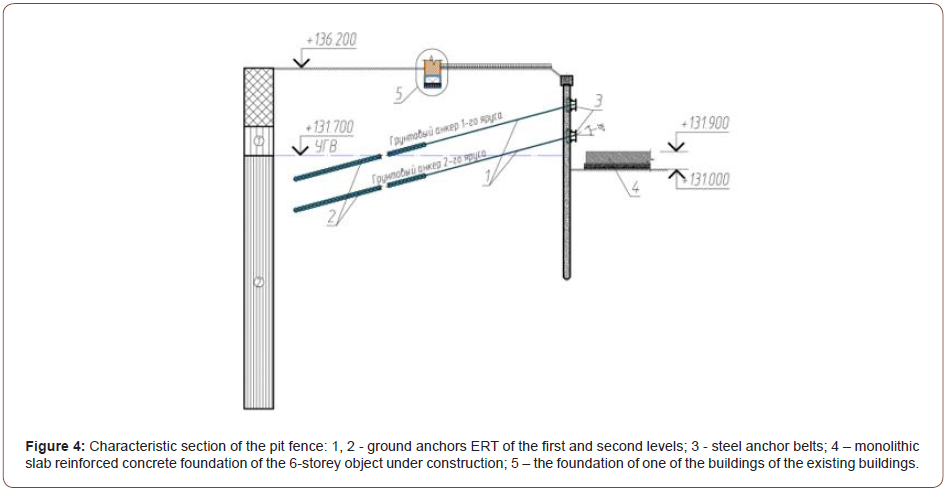
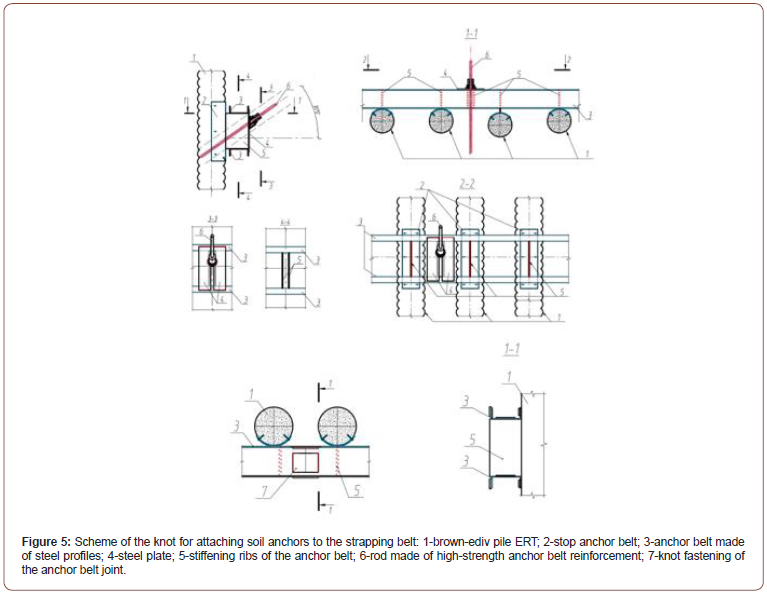
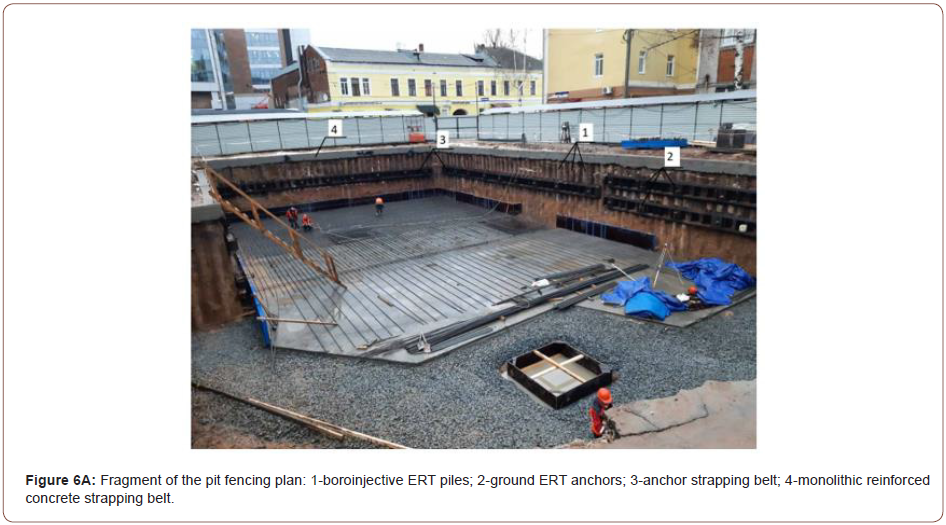

Table 1: Resource requirements by component.

Table 2: Resource requirements by component.

Below in Table Figure 2 shows the algorithm for the device of ERT drill injection anchors (Table 2).
Conclusion
1. Brown-injection piles and soil anchors ERT, being buried reinforced concrete structures of the pit fence during the construction of a six-story residential building, made it possible to build an object without negative consequences for buildings of the surrounding buildings.
2. The algorithm for the installation of soil anchors ERT has been tested on many objects of geotechnical construction. It is mandatory in the manufacture of brown injection ERT anchors.
To read more about this article...Open access Journal of Civil & Structural Engineering
Please follow the URL to access more information about this article
https://irispublishers.com/ctcse/fulltext/installation-of-pit-fencing-in-cramped-conditions.ID.000690.php
To know more about our Journals...Iris Publishers
To know about Open Access Publishers





No comments:
Post a Comment